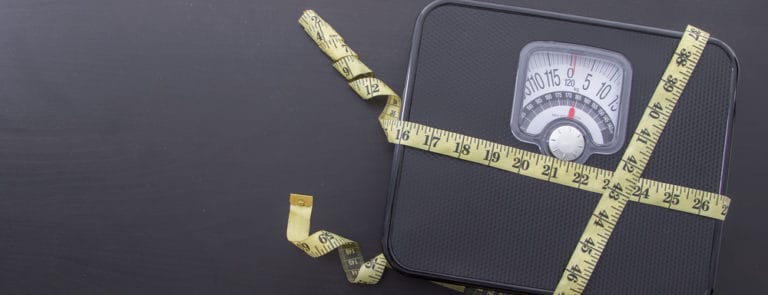10% off £35
Code:SAVE
Your guide to basal metabolic rate (BMR)

We all have a BMR. Calculating yours is straightforward – and once you know it, you’ll know how many calories your body needs simply to survive.
Summary
1What is basal metabolic rate (BMR)?
BMR stands for basal metabolic rate. Your BMR score is a number which refers to how many calories you burn at rest.
2What is a good BMR?
Everybody’s BMR is different. It is influenced by age, gender, body size, height, weight, and mass – even the size of your internal organs.
3Using BMR to lose weight
The BMR isn’t a diet tool in itself – but knowing your BMR can help stop you from restricting too many calories, which will leave you lethargic.
Knowing your personal BMR can help you understand your body and the way it burns energy. But what is BMR? What does BMR stand for?
Our bodies are complex. Right now, your body is carrying out thousands of intricate functions. There are the obvious things like breathing and your heartbeat pumping blood around your body. And behind the scenes, your cells are repairing and rebuilding, your food is digesting, and your temperature is being regulated.
All these physical functions demand energy from your body, which is where the BMR comes in. t
Read on to find out how your BMR can help you lose weight and keep it off.
What is basal metabolic rate (BMR)?
BMR stands for basal metabolic rate. It’s sometimes written as metabolic basal rate or basal metabolism. This is a score that is used to determine the amount of energy your body needs to carry out the most basic functions which keep you alive whilst you are in a resting state. This is calculated using a formula and is based on certain physical characteristics which are unique to you.1
We all need energy to fuel breathing, the heartbeat, nervous system communication, digestion, the endocrine system and more. So, even when the body is completely at rest or asleep, we are burning energy. We measure how much energy we use to fuel basic bodily functions in calories. How many calories an individual burns to fuel basic bodily functions is their basal metabolic rate (BMR) and varies from person to person.
An individual’s BMR can vary depending on certain factors, including height, weight, genetics, body composition, age and gender. For example, muscle burns more calories at rest than fat. So, if you have more muscle than fat, then your BMR will be higher than someone with more body fat.2
What is an example of a BMR score?
Your BMR score is a number which refers to how many calories you burn at rest. Most people’s BMR is between 1000 – 2000. This means that they need to take in between 1000 – 2000 calories each day to fuel their basic functions while in a resting state.
Your BMR number doesn’t take into account calories burned through moving around, talking, or exercising.
Summary
- BMR stands for basal metabolic rate
- Your BMR is the amount of energy your body needs to carry out the most basic functions like breathing and digesting food
- Things like your gender age and body composition all affect BMR.
How to calculate your BMR?
There are two formula for calculating BMR.
1. Harris Benedict
One is called the Harris Benedict equation. It’s been use in some form since 1919 and provides an estimate of how much energy you use just by staying alive.
The Harris-Benedict equation is as follows: 3
| Female | BMR = 655.1 + (9.563 × weight in kg) + (1.85 × height in cm) − (4.676 × age in years) |
|---|---|
| Male | BMR = 66.47 + (13.75 × weight in kg) + (5.003 × height in cm) − (6.755 × age in years) |
To calculate your BMR, simply follow the equation. This equation is based on the metric system so use kilograms for your weight and centimetres for your height.
An example: 32-year-old female weighing 70kg at a height of 180cm.
655.1 + (9.563 x 70) + (1.85 x 180) – (4.676 x 32) = 1507.878 BMR
The BMR refers to the amount of energy (in calories) you would burn if you were lying down all day, with no activities.
2.Mifflin St Jeor
This is a more up to date BMR formula, although both this and Harris Benedict are widely used.4
| Female | BMR = (10 × weight in kg) + (6.25 × height in cm) − (5 × age in years) - 161 |
|---|---|
| Male | BMR = (10 × weight in kg) + (6.25 × height in cm) − (5 × age in years) + 5 |
An example: 32-year-old female weighing 70kg at a height of 180cm.
(10 x 70) + (6.25 x 180) – (5 x 32) – 161 = 1504 BMR
As you will see, the results based on the same 32-year-old, 70kg, 180cm woman are very similar.
If you don’t want to do the maths yourself, there are various calculators available online which will tell you your BMR in seconds after you enter your height, gender, weight and age.
Using BMR to lose weight
Your BMR is a useful tool in determining how many calories you should be cutting from your daily diet in order to lose weight safely.
The BMR isn’t a diet tool in itself – but knowing your BMR can help stop you from restricting too many calories, which will leave you lethargic, irritable and hungry. This is a reason many diets fail – as feeling this way isn’t the best starting point for sustainable weight loss.
To lose weight using your BMR:
- First calculate your personal BMR (as above). This will tell you the minimum number of calories you should get each day.
- Then, you also need to know how many calories you need each day to maintain your current weight, so you can subtract calories accordingly to determine the ideal daily calorie limit for you.
As a guide, the average man needs about 2,500 calories and the average woman needs 2,000 calories a day to maintain their weight.5
However, we’re all different, so calculating your calories based on your individual specifications will give you the most accuracy.
You should also take into account your level of physical activity. If you have an active job or exercise regularly, you won’t need to cut as many calories to lose weight as someone with a more sedentary life.
The best way to get an accurate result is using an online calculator, where you can enter your vital statistics and your activity level. This one by the NHS will tell you your recommended daily calorie intake to lose weight if you’re overweight.6
Then, you can subtract some calories, creating a deficit, while still staying above your BMR calories.
For weight loss, a general rule of thumb is to create a daily deficit of no more than 500 – 600 calories. This will ensure steady and sustainable weight loss. Aim to lose about 0.5 to 1kg (1 to 2lb) a week until you reach a healthy weight for your height.7
Remember, most people need over 1000 calories each day just to maintain their basic, life-sustaining functions. This is why restrictive ‘crash’ diets are really bad news for your body. Not getting enough energy each day can interfere with your body’s basic processes, such as causing reduced brain function, low blood pressure or abnormal heart rate.
So, you should always take in, as a minimum, the number of calories you need to maintain basic functions as indicated by your BMR.
What is a good BMR?
There is no ‘good BMR’.
Everybody’s BMR is different. It is influenced by age, gender, body size, height, weight, and mass – even the size of your internal organs.
A low BMR means you need fewer calories in order to sustain life-giving functions like breathing. It also means you need to take in fewer calories in order to lose weight than someone with a higher BMR.
Things like illness, exercise, drugs (including nicotine) and even stress and anxiety can all raise your BMR.
What is a good BMR for men and women?
Men generally need more calories than women and tend to have a higher BMR.8
This is because men are generally larger in size and have more muscle mass than women.
Men’s BMR tends to be around 1600 - 1800. This means men burn 1600 – 1800 kcal during the day at complete rest.9 However, remember BMR is based on your own height, weight and age, so it’s not advisable to go off average numbers.
Most women have a BMR of around 1550 calories a day.10 Again, this will vary depending on the individual woman and her physical characteristics.
How does age affect BMR?
The BMR decreases steadily as we age. This is thought to be down to a reduction in muscle mass which is a natural part of ageing.11
If we continue to eat the same number of calories as we get older, without adjusting the amount to accommodate a decreasing BMR, then we gain weight. This is especially common in the abdominal area, sometimes called the ‘middle-aged spread’.
Summary
- Your BMR is unique to you – based on height, weight, age, gender and health
- Your BMR can help you cut calories from your daily diet in order to lose weight safely
- You shouldn’t eat fewer calories as indicated by your BMR – otherwise you can experience adverse health effects.
- https://www.diabetes.co.uk/bmr-calculator.html
- https://www.nhs.uk/live-well/healthy-weight/metabolism-and-weight-loss/
- https://www.thecalculatorsite.com/articles/health/bmr-formula.php
- https://www.thecalculatorsite.com/articles/health/bmr-formula.php
- https://www.nhs.uk/live-well/healthy-weight/keep-weight-off/
- https://www.nhs.uk/live-well/healthy-weight/bmi-calculator/
- https://www.nhs.uk/live-well/eat-well/cut-down-on-your-calories/
- https://www.cambridge.org/core/journals/british-journal-of-nutrition/article/is-resting-metabolic-rate-different-between-men-and-women/
- https://www.thestar.com.my/lifestyle/viewpoints/tell-me-about/2013/08/28/understanding-bmr
- https://www.thestar.com.my/lifestyle/viewpoints/tell-me-about/2013/08/28/understanding-bmr
- https://pubmed.ncbi.nlm.nih.gov/8361073/
Related Articles
Shop by wellness goal
Sign up for exclusive offers
Plus, get expert advice to support your health & wellness straight to your inbox when you sign up to Holland & Barrett emails.
Read our
privacy policy














